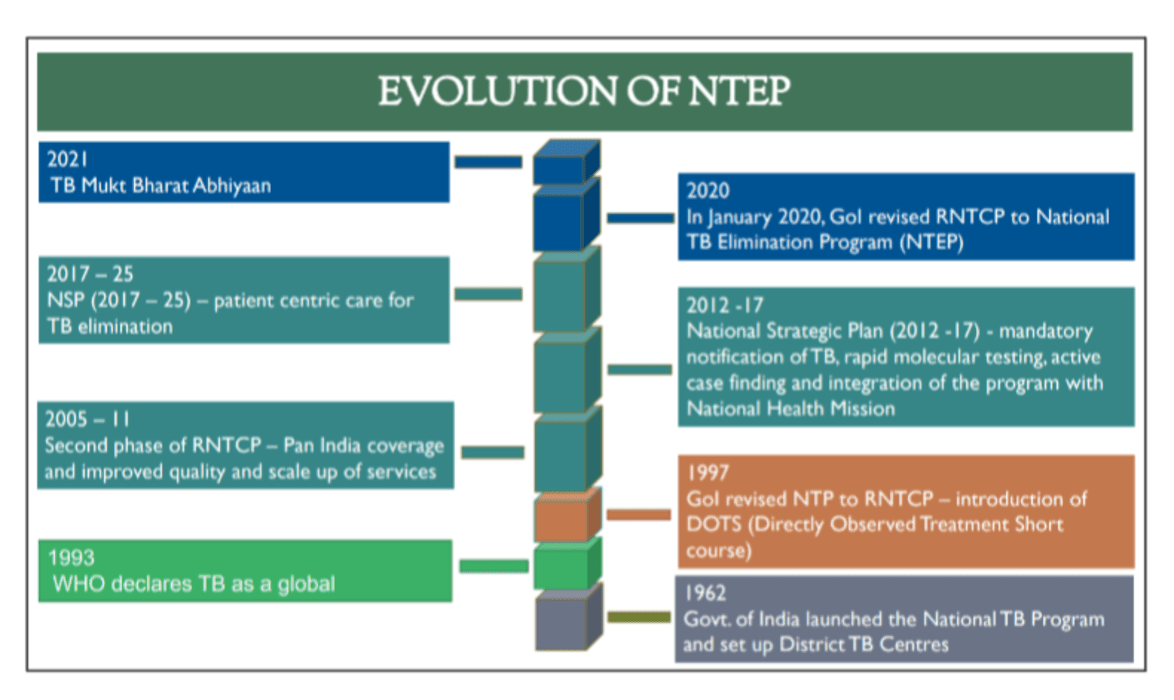News Excerpt:
Dr. Soumya Swaminathan has been appointed as the Principal Advisor at the Union Ministry of Health & Family Welfare for the National Tuberculosis Elimination Programme on a pro bono basis.
National Tuberculosis Elimination Programme (NTEP):
About Ni-KSHAY:
- NI-KSHAY-(Ni=End, Kshay=TB) is the web enabled patient management system for TB control under the National Tuberculosis Elimination Programme (NTEP).
- It is developed and maintained by the Central TB Division (CTD), Ministry of Health and Family Welfare, in collaboration with the National Informatics Centre (NIC), and the World Health Organization (India).
- Ni-kshay is used by health functionaries at various levels across the country both in the public and private sector, to register cases under their care, order various types of tests from Labs across the country, record treatment details, monitor treatment adherence and to transfer cases between care providers.
- It also functions as the National TB Surveillance System and enables reporting of various surveillance data to the Government of India.
Pradhan Mantri TB Mukt Bharat Abhiyan (PM TB MBA):
- PM TB MBA is an initiative launched by the Ministry of Health and Family Welfare (MoHFW) of India with the aim of eliminating tuberculosis (TB) by 2025.
- This initiative recognizes the multifaceted nature of the TB challenge and emphasizes the need for a multi-sectoral response involving various stakeholders, including communities and societal institutions.
- The PM TB MBA initiative is significant for its community-driven approach and its focus on reducing stigma associated with TB while providing comprehensive support to patients.
- It involves the community in a 'Jan Andolan' to accelerate progress towards TB elimination, making it a unique model.
- Three-fold Objectives:
-
- Providing additional patient support to improve treatment outcomes.
-
- Augmenting community involvement in meeting India’s commitment to end TB.
- Leveraging Corporate Social Responsibility (CSR) activities.
|
What is Tuberculosis? Tuberculosis (TB) is caused by a bacterium called Mycobacterium tuberculosis. The bacteria usually attack the lungs, but TB bacteria can attack any part of the body such as the kidney, spine, and brain. Transmission:
Symptoms:
Treatment:
Multidrug-resistant TB:
|


